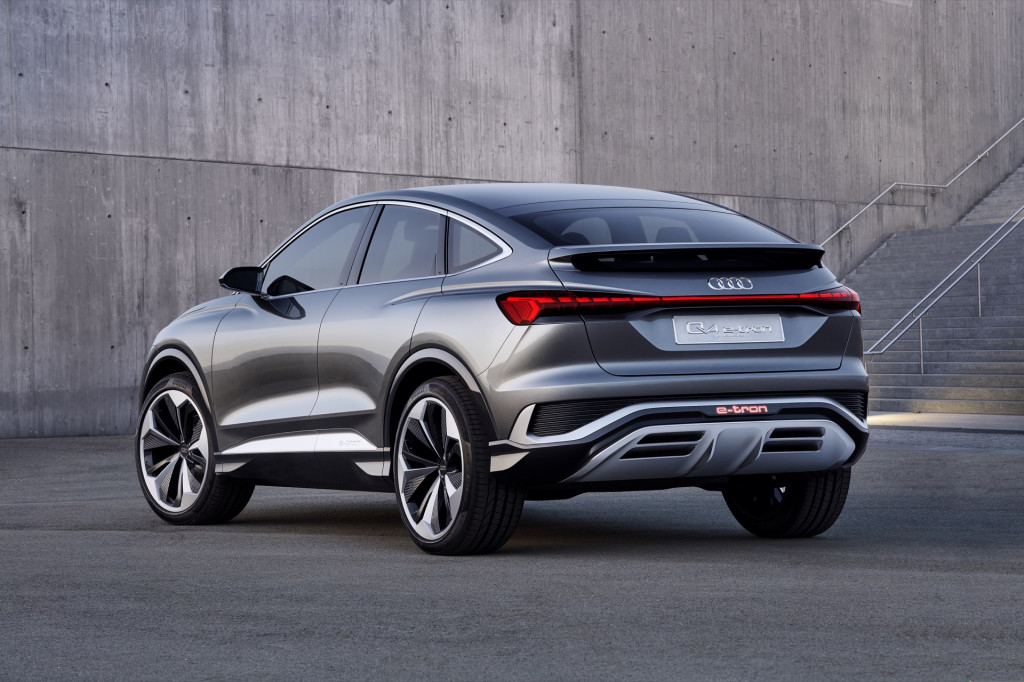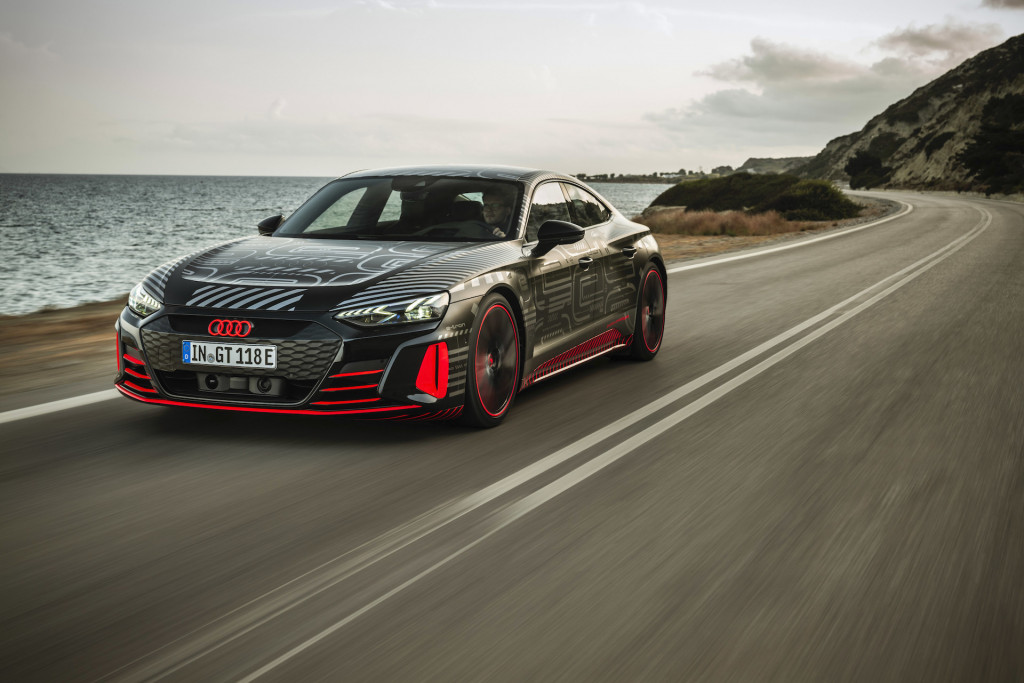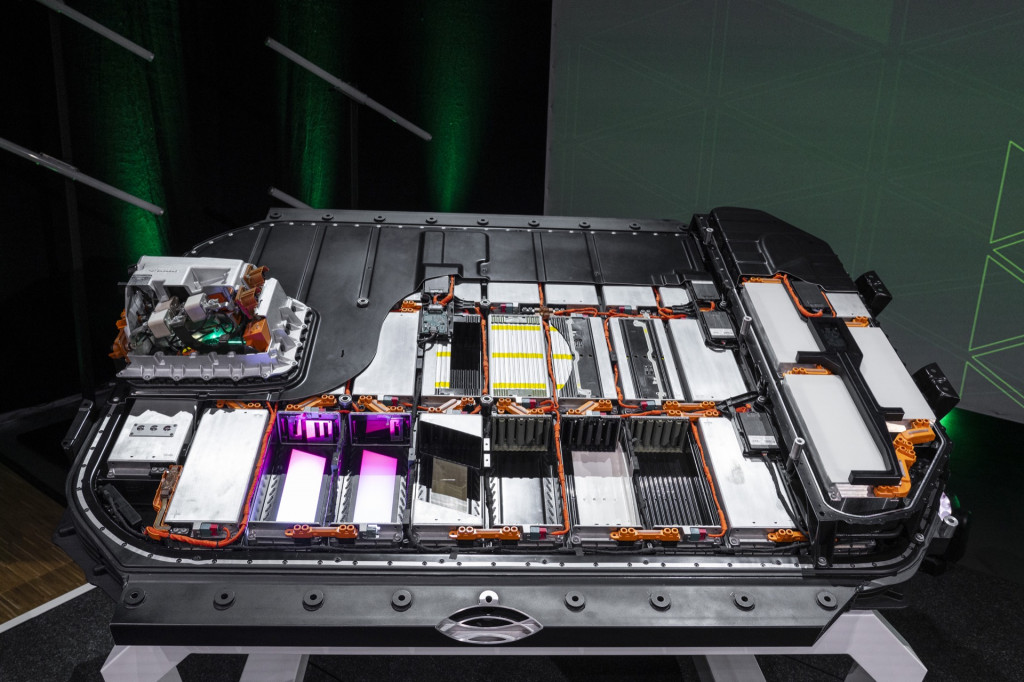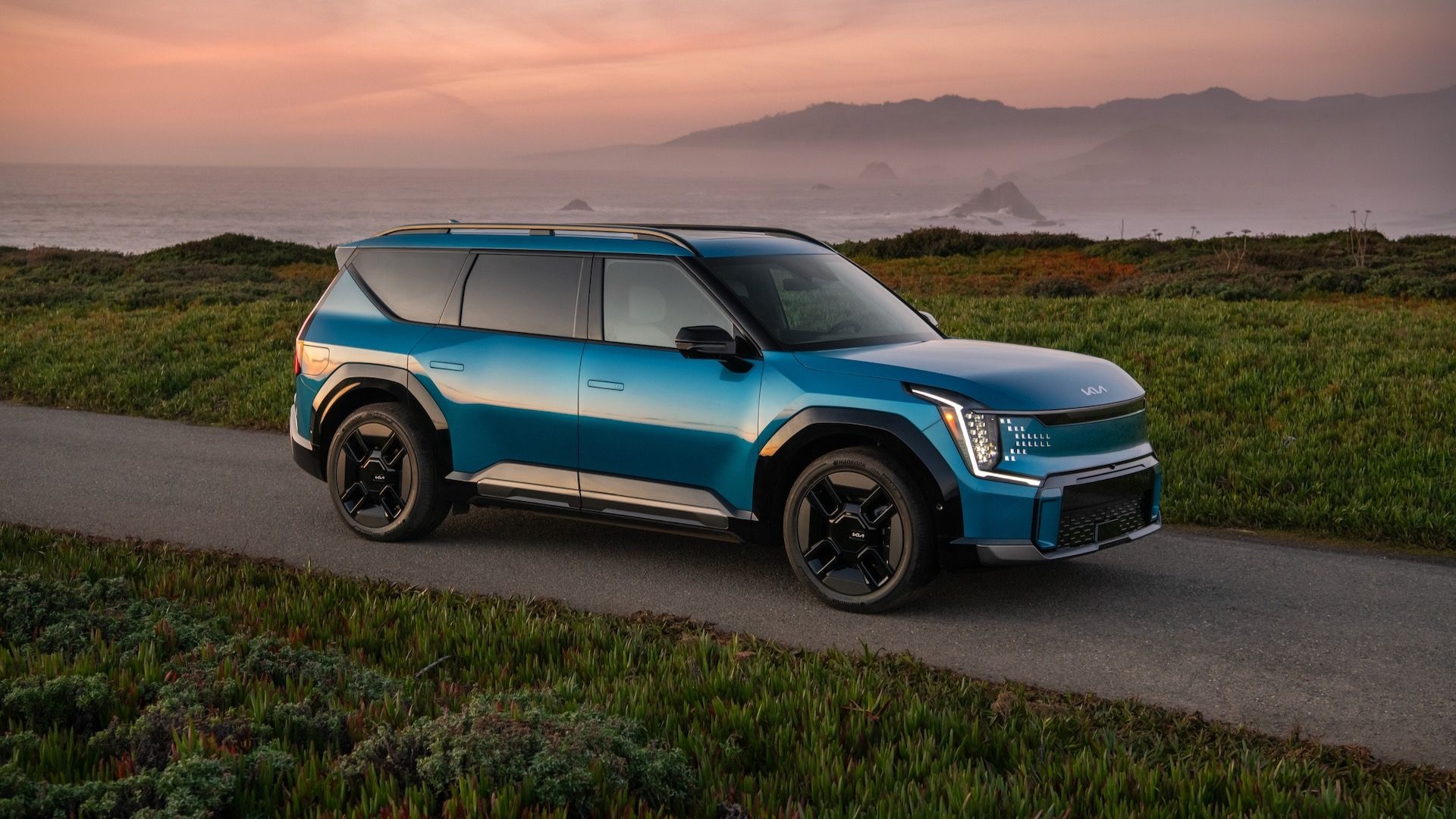Making battery-electric models emits more carbon dioxide than making internal-combustion models
When you consider the massive CO2 reduction from plugging in—and that the emissions from driving and using a vehicle over its lifetime far exceeds the emissions from manufacturing it—the point about manufacturing should by no means keep you from going electric.
As Audi underscored earlier this month in a virtual presentation and Q&A to the press, cutting manufacturing emissions is no moot point either—and the fact that manufacturing becomes a larger piece of electric vehicle footprint adds urgency to it.
As part of a program called Mission Zero it aims to achieve CO2-neutral status at all production facilities by 2025 and then carbon neutrality in all aspects of “the environmental balance sheet” by 2050.
That includes a goal for cutting the total lifecycle CO2 emissions of its vehicles by 30% by 2025, from 2015 levels.

Audi Q4 Sportback e-tron concept
Audi recently achieved CO2-neutral production at its Győr, Hungary, plant—where the upcoming Q4 E-Tron SUV and Sportback will be made starting next year—through the installation of Europe’s largest solar rooftop, at 9.5 gigawatt-hours per year. That makes it the second CO2-neutral production site for the brand after Brussels, where the E-Tron SUV and Sportback are made.

Rooftop solar in Gyor, Hungary - Audi plant
Across entire vehicle lines, there’s potential to avoid CO2 emissions through a closed-loop strategy for aluminum that Audi started rolling out in 2019. By utilizing “secondary aluminum” pieces Audi has already managed to save up to 95% of the energy in manufacturing some components. The strategy is used in a number of current models, including the E-Tron SUV and Sportback, as well as in the upcoming E-Tron GT.

2022 Audi E-Tron GT prototype
Reducing water use is important, too. Audi’s Mexico plant is the world’s first wastewater-free automotive assembly plant, and it uses a biomembrane-based system. The company has also transitioned to an entirely electrostatic paint process. It’s upping the recycled materials it uses within vehicles. And in between facilities, Audi is turning to a mix of hybrid and electric rail freight lines, as well as liquified natural gas (LNG) trucks, with CO2-neutral rail lines used within Germany.
The challenges of looking upstream
And then there’s the supply chain—an immense opportunity for CO2 reduction. Marco Philippi, Audi’s head of procurement strategy, recently called the sustainability gains in the supply chains both a challenge and an opportunity.
Because of the transition toward electric vehicles, the carbon footprint of the supply chain as a whole increases, Audi says, because of how carbon-intensive the battery production process is. According to Audi, the upstream supply chain is where roughly one quarter of CO2 emissions will be generated by 2025, and with more than 14,000 direct suppliers to the carmaker, that adds up to a lot of necessary accountability, with Audi opting to take what it calls “a hot-spot approach” focusing on 16 critical raw materials—with cobalt for batteries at the top of the list.

Audi E-Tron battery
Philippi said that blockchain and other methods don’t yet work for this with the push of a button. “Here we have forensic audits, to take a really close look...we take this all the way down to the raw materials.”
Audi isn’t planning to achieve its supply-chain gains by subsidizing its supply network, although Philippi said that this will happen implicitly—because CO2 impact will play a role in the decision-making process.
Having different standards for CO2, social responsibility, and procurement is perhaps one of the biggest hurdles the industry faces, according to Philippi. If every company were to drive this and have it as their top priority, he said, many things would become a lot easier, as there would be an intrinsic motivation to stick to climate goals in each case, not just for particular customers.













